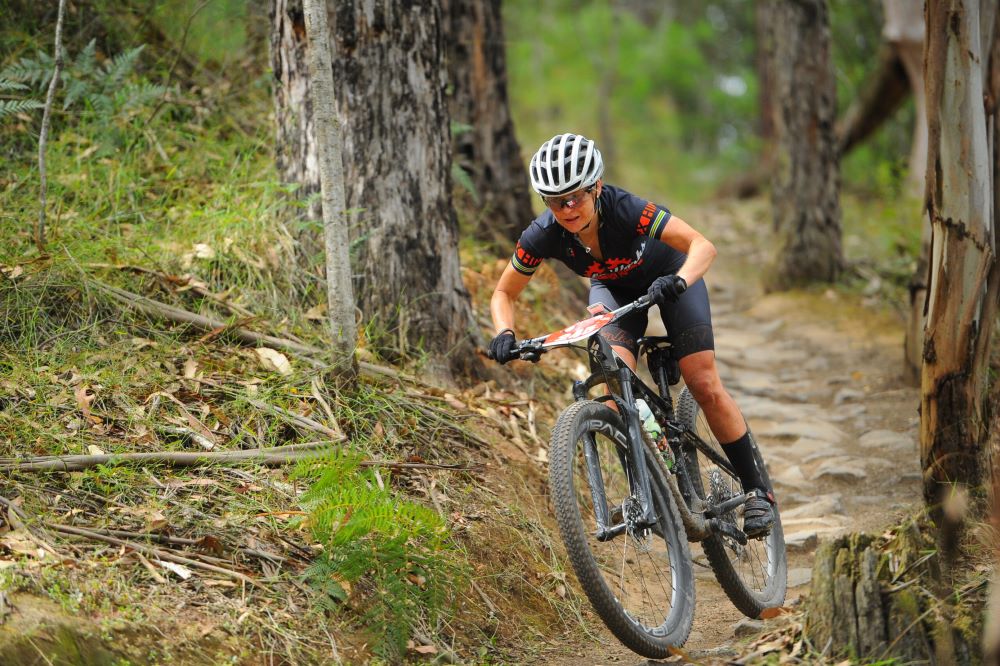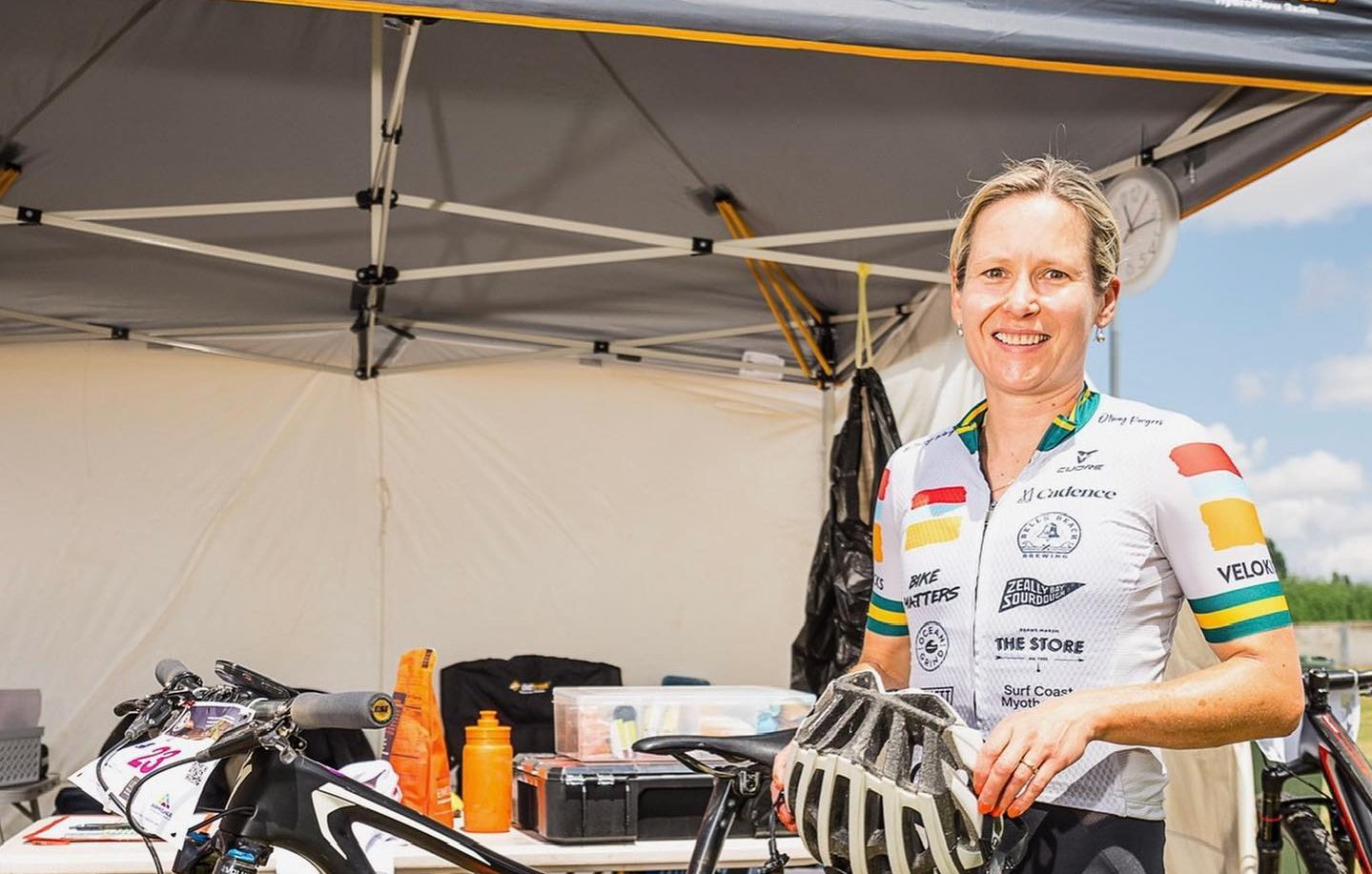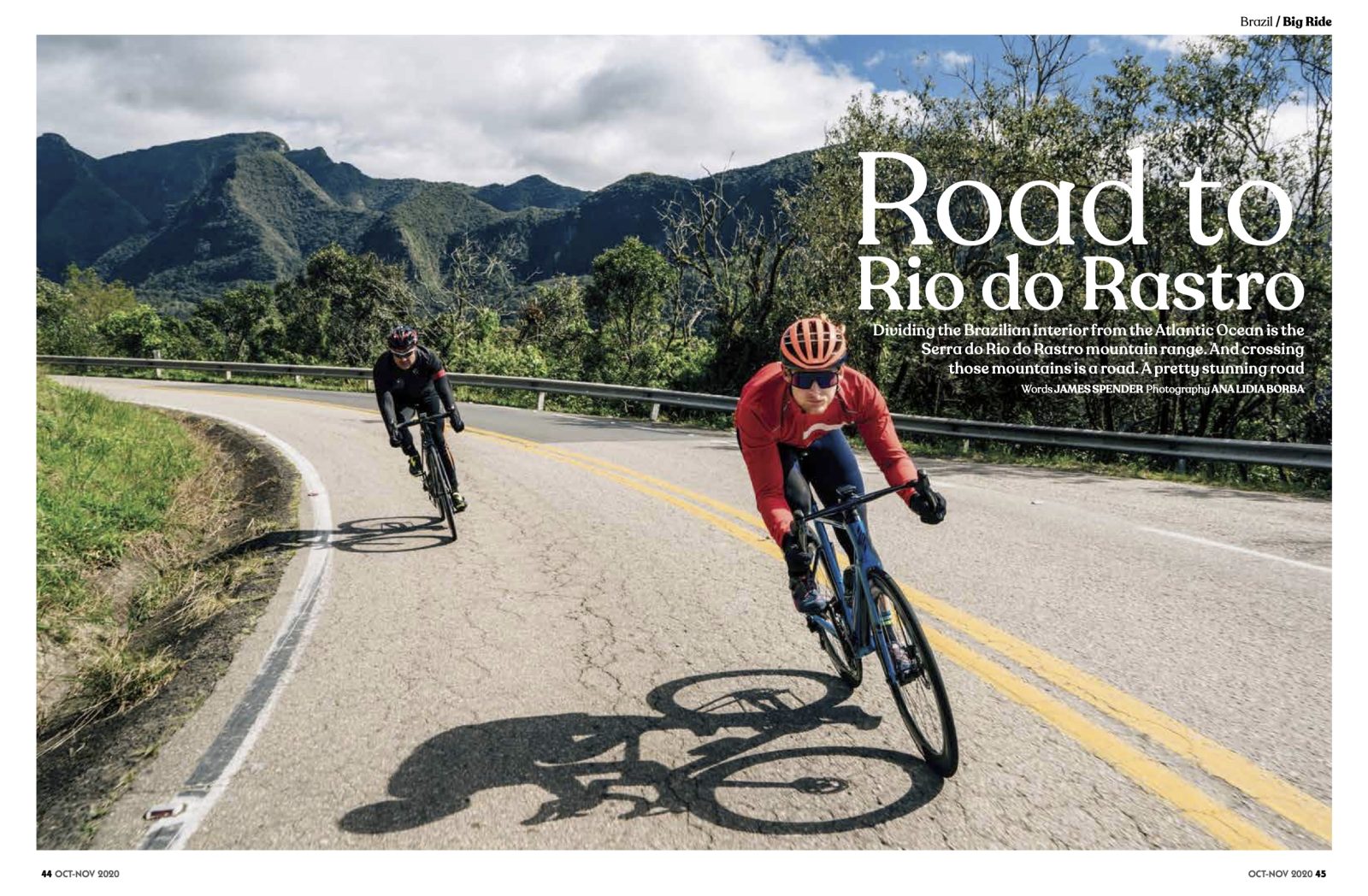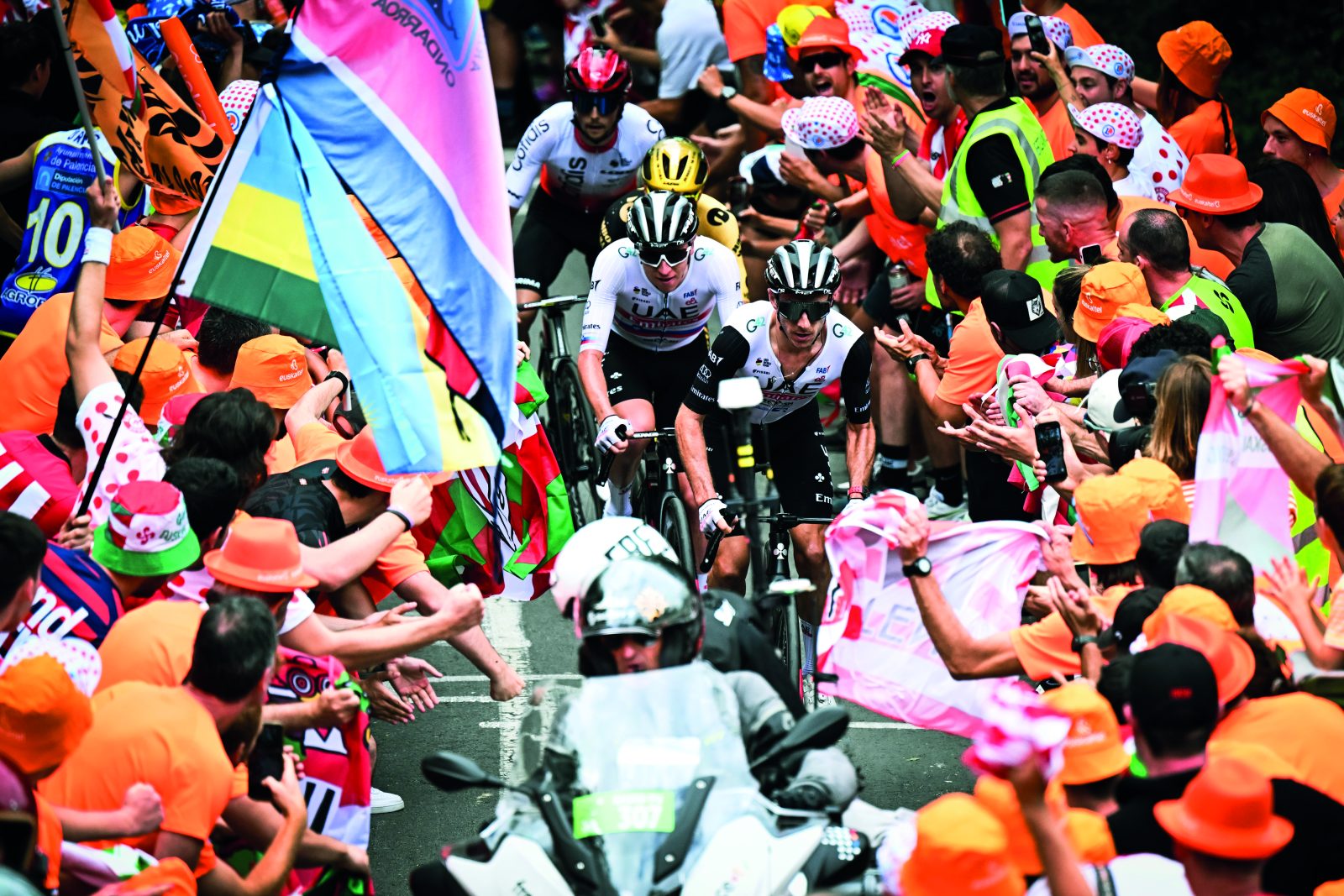The elite World Solo 24-hour MTB Champ and seven-time Peaks Challenge 11-hour wave leader discusses her love of multiple disciplines, advice for Peaks first-timers and getting closer to gender parity in the cycling community.

Interview JACK LYNCH Photography OUTER IMAGE COLLECTIVE / RACE ATLAS
Cyclist: Hey Kate. For those unaware of your cycling CV, can you please run our readers through your palmarés and background?
Kate Kellett: I grew up on acreage and like most kids in the country, learned to ride quite early on. As an adult I didn’t get into competitive cycling until I was in my early 30s when I started racing mountain bikes at a club level with Geelong Mountain Bike Club, of which I’m still a very proud member.
I came from a competitive sports background and was drawn to mountain biking because it presented a challenge that wasn’t just about fitness, but also involved a huge amount of technique to be able to successfully manoeuvre a bike over rocks, obstacles and whatever else singletrack can throw at you.
Aside from the physical and technical challenges, I also loved being outdoors in the bush, so it’s fair to say mountain biking ticked a lot of boxes. My journey into elite endurance MTB racing saw me compete in my first World Solo 24 Hour MTB Championship in 2015, where I finished fourth.
I’ve since competed in another four world championship events, and after another fourth (2017), a bronze medal (2016) and a silver medal (2018), I finally claimed the Elite World Solo 24 Hour MTB Championship title in November last year.
Cyc: So, while you’re predominantly a mountain biker, what excites you about riding on the road?
KK: I love riding all bikes, whether it be mountain, gravel or road. They all offer something different in terms of enjoyment and I love the diversity of being able to tap into the different disciplines. It keeps things interesting and provides options for the change in road or surface conditions that comes with a change in season.
I typically ride my mountain bike all year round, but when summer hits the gravel roads tend to dry out and become corrugated, which sees me spend more time on the road bike.
It’s very hard to beat road riding in the warmer months climbing Mount Hotham or Falls Creek in Victoria’s High Country, or riding in the Adelaide Hills or the Dandenong Ranges.
The views and scenery are spectacular, and there’s no better feeling than being rewarded with a long, fast-flowing descent in the warm air in short sleeves.
Cyc: You’ve been the 11-hour wave leader for seven Peaks editions. Do you have any stories from the groups you’ve ushered through over the years?
KK: 2020 was definitely the most challenging year, but was also the most rewarding as a wave leader. Conditions were horrendous; the day was characterised by wind, rain and freezing temperatures. We got to the top of Mount Hotham, 104km into the ride, and it was 3°C but felt like -2°C.
Some riders were suffering from hypothermia and experiencing higher levels of fatigue than normal. I can remember telling people not to hang around at the Dinner Plain rest stop for too long as they needed to warm up and the only way to do that was to get off the mountain as soon as possible by starting their descent into Omeo.
The 11-hour team collected as many riders as we could and took them down the mountain into Omeo. Rolling out of Omeo, we had a train of well over 100 riders whom we towed into Anglers Rest, and then on to WTF Corner at the bottom of the Falls climb.
While the first 10km of the back of Falls is usually one of the most challenging parts of the day, in 2020 it paled in comparison to the conditions on top of Mount Hotham. Anyone who’d made it this far was on track to be a Peaks Finisher, and I can remember looking around at the riders as they embarked on the final 30km knowing they were going to make it.
Cyc: Do you have any advice for a Peaks first-timer?
KK: Eat, eat, eat and eat some more. Fuel is vital. If you don’t put petrol in the car, it’ll stop. Cycling is no different. If we don’t fuel our bodies with carbohydrates before, during and after riding, we stop (aka bonk).
It’s very hard to come back or recover from this and for an endurance event like Peaks it could mark the end of your ride. The general rule of thumb for carbs per hour is your body weight x 1g carbohydrate. For example, a person who weighs 70kg needs to be aiming for at least 70g of carbs per hour, which can be in the form of liquid, solid food or gels.
It can also be helpful to seek out the advice of a nutritionist or dietitian to help tailor a nutrition plan not just for the event, but also for the training leading in. The second piece of advice for the day is to limit stopping time at the rest stops. Go into each rest stop with a plan on what you want to achieve (e.g. fill up water bottles, grab two gels, go to the toilet).
Execute according to the plan and then get back on your bike and go. Time can be precious, particularly if you have a target time in mind (e.g. >10 hours). It’s very easy to chew up time at the rest stops by not going in with a plan.

Cyc: What’s harder, a solo 24-hour MTB race or Peaks Challenge?
KK: They can both present their own challenges, however, if I had to pick the more difficult one it’s a solo 24-hour MTB race, based on the duration and rough terrain you have to manoeuvre on the bike.
Twenty-four hours on the mountain bike sees me cover around 350km and just over 6,000 metres of vert, so it’d be interesting to compare a 24-hour version of Peaks Challenge to the mountain bike to see how they stack up against each other.
Cyc: There’s a huge gender imbalance in Peaks participation. Why do you think that is?
KK: Peaks is a long, hard day on the bike. I think females are just as capable of completing the event as males, however they often believe this isn’t the case because there aren’t as many examples of women that have successfully completed the event.
Cyc: How can we as a cycling community encourage more women and girls into the bunch?
KK: In my view, I don’t think we need to try and turn every male or every female bunch into a mixed bunch. Every bunch has its own dynamic or culture and it’s important not to mess with this. There’s a bunch out there for everyone and I’d encourage women and girls to find a group that aligns to their personal cultural values.
My introduction to bunch riding was really positive thanks to the Pirates Sporting Club, who offered to take this rogue mountain biker under their wing and show her how to roll turns.
The banter with the group was great and despite being talented athletes both on and off the bike, they didn’t take themselves too seriously. I loved the group and felt comfortable with them.
In my early days I was only able to roll a few turns before I needed to drop to the back, but over time I gradually grew stronger to the point where I was able to participate in the whole 40km roll from St Kilda to Mordialloc return on Melbourne’s infamous Beach Road.
Based on my experience, if we’re trying to encourage more women and girls into the bunch, I think the key is to not place pressure on the individual to participate in the roll. Allow the individual to drop in when they feel they can participate, and then drop to the back when they have hit their limit.
Cyc: Do you have any ideas or strategies you’d love to see rolled out across our community to get closer to gender parity?
KK: Inclusiveness and making people feel a part of a cycling community is key to encouraging anyone to get into riding. In regard to women and girls specifically, community doesn’t necessarily need to be all female.
When I first started riding mountain bikes, I had a few close male friends who taught me how to ride. I had no idea what I was doing at the time and spent more time on the ground than I did upright. My gender was irrelevant, they just loved my enthusiasm for it and were happy to show me the ropes.
Community can often start with the clubs. I’m President of Geelong Mountain Bike Club and we don’t care whether someone is an elite level mountain bike rider or jumping on a bike for the first time. The club just wants to see more people racing and riding mountain bikes.
The ladies have the option to race with the guys if they want, but they also have the option to race only with the women if that’s their preference. It’s about providing options that people can then select.
The other thing I’d mention to is that if a female has a specific cycling goal in mind (e.g. ride 500km a month, do Peaks Challenge, complete an Everest, race a weekly club crit), the family unit needs to support and provide space forher to do this. Cycling is rarely a solo sport.
Cyc: What are your cycling goals for 2024?
KK: I’m not sure just yet. After last year’s world champs, I’ve had a break from training and racing, and because my season doesn’t typically start until later in the year I haven’t worked out what I want to do just yet. I’ve just got a new mountain bike, a ZFS-5 Cervélo, which I’m really excited about, so the focus over the last month has been on dialling that in. At this stage, the only thing that is locked in is Peaks Challenge.
Kate Kellett
Home town
Torquay, VIC
Notable results and achievements
Elite World Solo 24Hr MTB Champ (2023)
4x EliteAustralian Solo
24hr MTB Champ
7x Peaks Challenge
11-Hour Wave Leader
‘Inclusiveness and making people feel a part of a cycling community is key to encouraging anyone to get into riding,’ Kellett says.
For Peaks Challenge 2024, 10% of tickets currently sold belong to women. Bicycle Network’s Women’s Community program is committed to making bike riding an inclusive activity for all, so they’ve set the goal of doubling the female participation rate to 20% by Peaks 2025. Bicycle Network will run Women’s Community training sessions and social nights to connect and empower female and gender diverse riders to be confident in making the commitment to take on Peaks.
For more info, visit
bicyclenetwork.com.au



